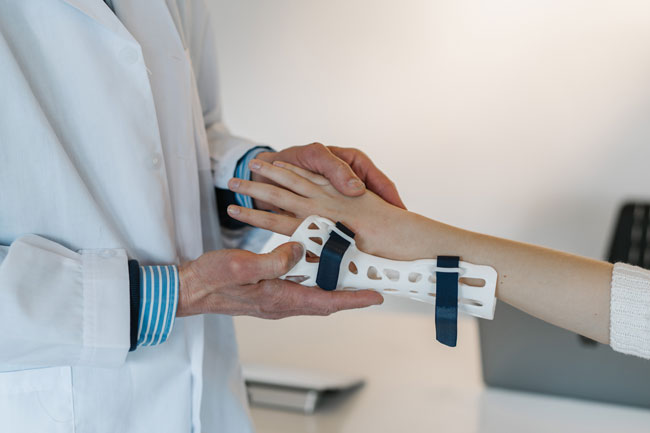
Carpal tunnel, also known as median nerve compression, is a condition that leads to tingling, weakness and numbness in the hands and wrist.
Carpal tunnel syndrome is a result of compression in the median nerve under the transverse carpal ligament at the wrist. The median nerve is present in the person’s arms and it passes through the carpal tunnel, which is a passage in the wrist. The nerve then ends in the hand. The median nerve handles the feelings and the movement of the thumb and the fingers except the little finger.
Diagnosis of this condition is a combination of clinical confirmation and relevant testing. A clinical diagnosis is based on the history of the symptoms and the findings of an examination. A doctor could conduct a test called tinel sign in which he taps the palm side of a wrist or fully flexes your wrist with arms extended. They might also include the following test:
In this, the doctor puts a thin electrode into the muscle to measure its electrical activity.
This can include X-rays, ultrasounds, or MRI scans to help to look at your bones or tissue.
Nerve conduction studies measure the signals in the nerves of your hand and arm, by taping electrodes to your skin.
The symptoms constitute the pain in the index and the middle finger. Apart from the pain symptoms, the patients might also experience numbness or tingling sensations. In some cases, which have progressed, the patients might experience muscle weakness or atrophy. Some of the symptoms of carpal tunnel include
 Treatment of carpal tunnel syndrome
Treatment of carpal tunnel syndromeConservative treatment options are utilised to avoid activities that irritate the nerve. Activities such as splinting and hand physiotherapy are also suggested by physicians. The treatment of carpal tunnel syndrome depends on the person’s symptoms. Some of the treatments employed include:
Some exercises such as stretching and nerve gliding exercises can assist in the better nerve movement in the carpal tunnel.
If a certain activity is causing a problem related to the carpal tunnel syndrome, then taking a break from it is advisable.
A patient could wear a splint at the wrist so that the wrist does not move and the median nerve could rest.
A physician can also prescribe some steroids or anti-inflammatory drugs.
If the above treatments do not work, then the doctor could recommend undergoing carpal tunnel release surgery. This eases the pressure on the nerve.
Predisposing medical conditions for developing the syndrome include:
Repetitive movements of the hand and wrist can cause carpal tunnel syndrome to develop. This includes placing the wrist in abnormal positions.
A patient can reduce stress from the wrist and hands to prevent carpal tunnel syndrome. Some of the ways to achieve this include:
Some of the factors, which could increase the risk of carpal tunnel syndrome are as mentioned:
Carpal tunnel syndrome can lead to a reduction in the size and weakness at the base of the thumb. If not treated, this can further lead to permanent deformities. This can cause obstruction in the hand and palm movement for patients.
Carpus means wrist and is derived from the Greek word karpos. Carpal tunnel is a passage in the wrist that connects the pillars of the arch and constitutes carpal bones and ligaments.
The median nerve is present in the person’s arms and it passes through the carpal tunnel, which is a passage in the wrist. The nerve then ends in the hand. The median nerve handles the feelings and the movement of the thumb and the fingers except the little finger.